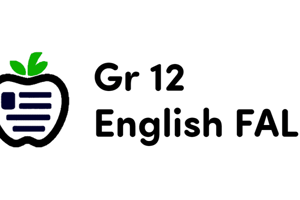Podcast
Questions and Answers
What is the main difference between passive voice and active voice?
What is the main difference between passive voice and active voice?
- Passive voice is always shorter than active voice in sentence structure.
- Active voice is used for general truths, while passive voice is used for specific actions.
- Active voice is more direct and focuses on the subject, while passive voice often obscures the subject. (correct)
- Passive voice emphasizes the subject, while active voice obscures the subject.
When is passive voice appropriate?
When is passive voice appropriate?
- When you want to be direct and clear about who is responsible.
- When the actor is unknown or irrelevant, or when you want to be vague about responsibility. (correct)
- When you want to emphasize the subject of the sentence.
- When you are talking about specific actions and events.
Which of the following sentences is an example of passive voice?
Which of the following sentences is an example of passive voice?
- The students eagerly listened to the teacher's explanation.
- A new bridge will be constructed across the river. (correct)
- I baked a cake for the party.
- The team won the championship last night.
What is a common reason for using passive voice?
What is a common reason for using passive voice?
What should you look for to identify passive voice in a sentence?
What should you look for to identify passive voice in a sentence?
How can you improve writing skills by reducing passive voice usage?
How can you improve writing skills by reducing passive voice usage?
Which of the following sentences demonstrates active voice?
Which of the following sentences demonstrates active voice?
What is a key method for identifying passive voice during revision?
What is a key method for identifying passive voice during revision?
When should you keep an eye out for passive sentences?
When should you keep an eye out for passive sentences?
Study Notes
Passive Voice: Understanding and Improving Writing Skills
Passive voice and active voice are two different ways to structure sentences in English. While active voice is more direct and places the focus on the subject, passive voice often obscures the subject and can be appropriate in certain contexts.
Examples
Passive: The form was processed and returned. Active: We completed your request and mailed the form to you
Passive: Soccer was played all day at the park, attracting spectators from across town. Active: Local college students played soccer all day at the park, attracting spectators from across town
Uses of Passive Voice
- The actor is unknown: The cave paintings of Lascaux were made in the Upper Old Stone Age.
- The actor is irrelevant: An experimental solar power plant will be built in the Australian desert.
- You want to be vague about who is responsible: Mistakes were made.
- You are talking about a general truth: Rules are made to be broken.
Avoiding Passive Voice
- Look for the passive voice: "to be" + a past participle (usually, but not always, ending in "-ed").
- If you don't see both components, move on.
Improving Writing Skills
To improve your writing skills and reduce excessive use of passive voice:
- Flip passive sentences to active voice.
- Remove "by zombies" from your passive sentences to check if they still make sense.
- Keep an eye out for passive sentences when revising.
- Be aware of your instructor's preferences regarding passive voice in specific contexts, such as lab reports and scientific writing.
Active Voice vs. Passive Voice
Passive voice often obscures the subject and can be more wordy and indirect, making the reader work harder. Active voice, on the other hand, is more direct and places the focus on the subject. Active voice is generally the preferred choice for clarity and precision in writing.
In conclusion, passive voice is a useful tool in certain situations, but active voice is usually the preferred choice for clarity and precision in writing. By understanding the uses, examples, and appropriate situations for passive voice, you can make informed decisions when deciding to use passive voice and improve your writing skills.
Studying That Suits You
Use AI to generate personalized quizzes and flashcards to suit your learning preferences.
Description
Test your knowledge on passive voice and active voice in English language writing. Learn about the uses of passive voice, when to avoid it, and techniques for improving writing skills by correcting passive sentences into active voice. Understand the differences between passive and active voice to enhance clarity and precision in your writing.




